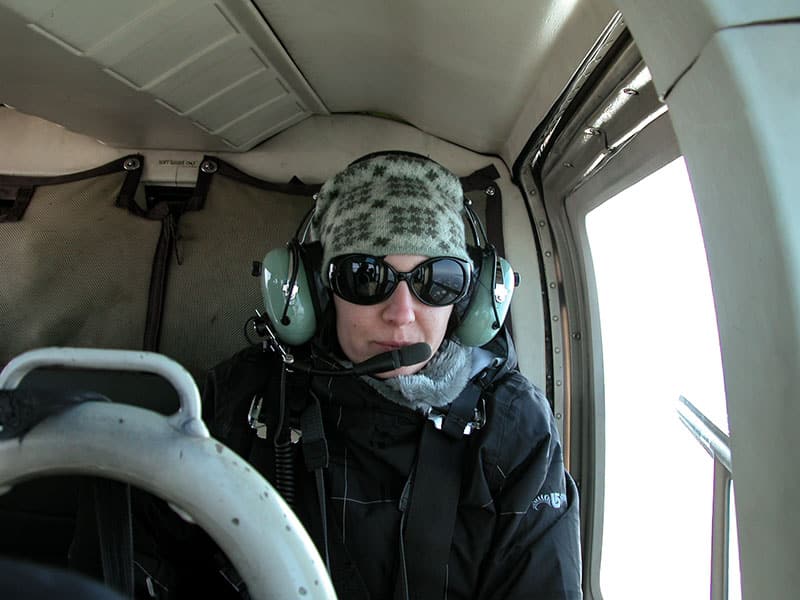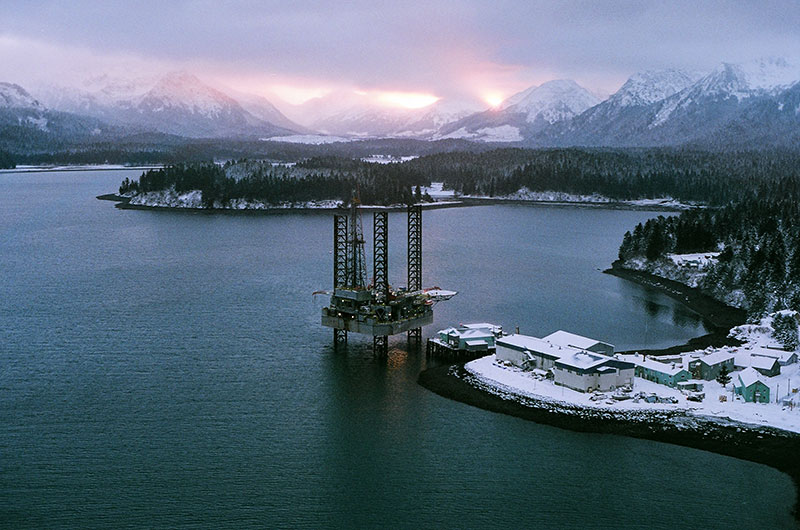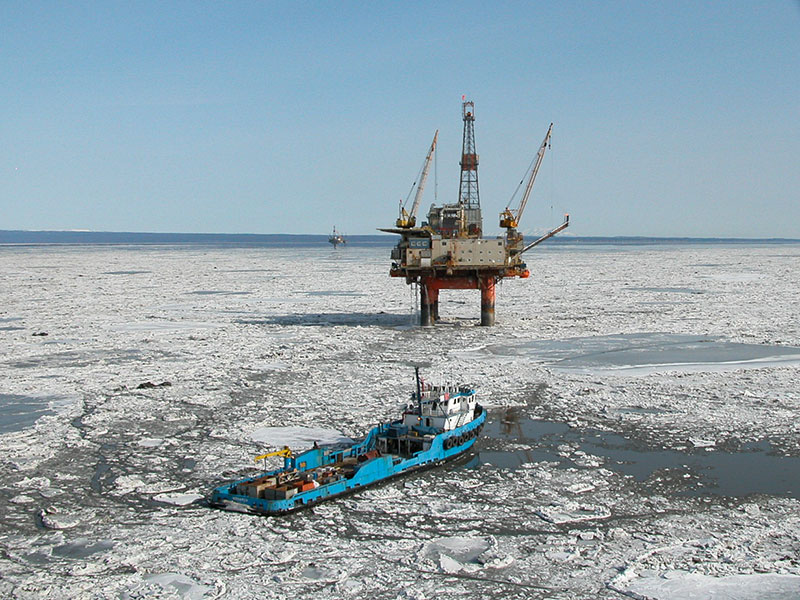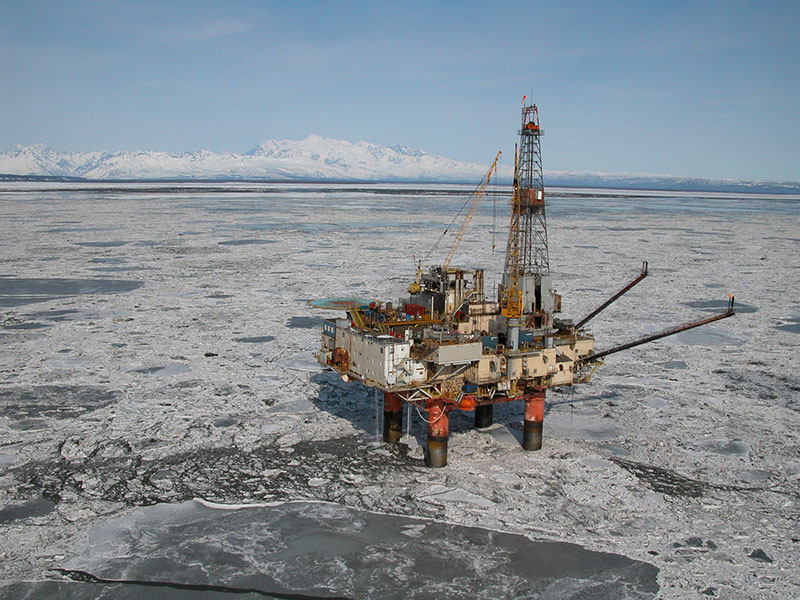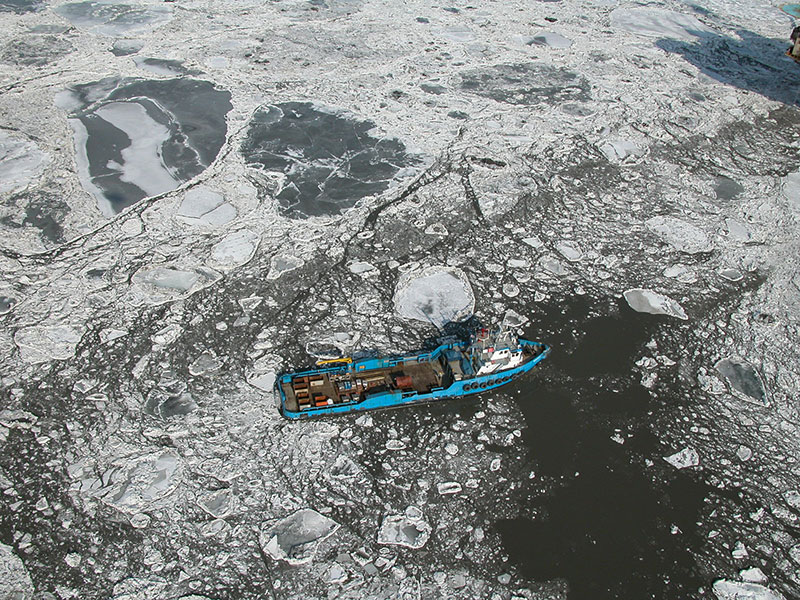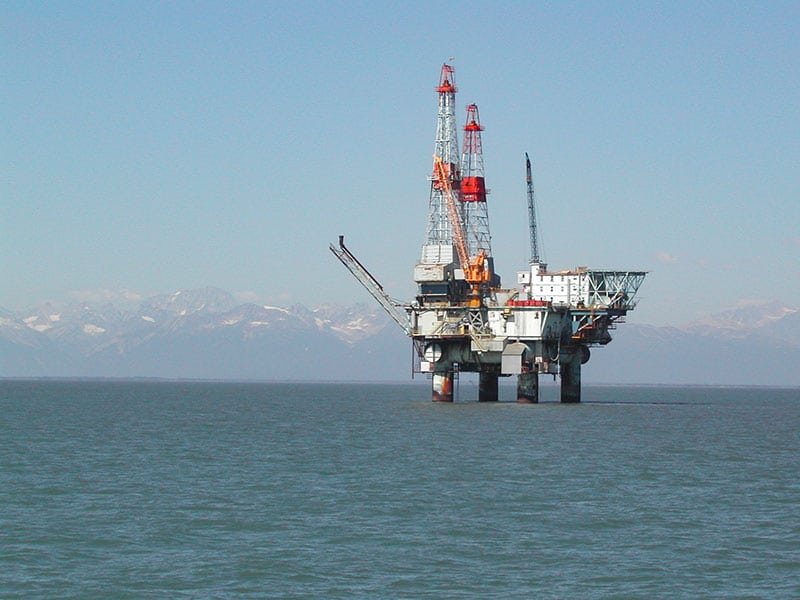Oil and Gas Discharge Permits
In 1972, the Clean Water Act (CWA) introduced a system for regulating point source pollution such as discharges from industrial and municipal facilities with a goal of eliminating toxic discharges, in part by incorporating technology based effluent limitations, in addition to water quality-based limits. The system was called the National Pollutant Discharge Elimination System (NPDES) and, under the program, point source discharges are not allowed without a permit. The NPDES program is managed by the U.S. Environmental Protection Agency (EPA) and their website provides background and information on the CWA and NPDES programs.
The CWA provides a mechanism for individual states to request approval to administer one or more components NPDES program components in their state, and if EPA approves the program, the state assumes permitting authority. The Governor of Alaska signed Senate Bill 110 into law in 2005, authorizing the state to pursue NPDES primacy. A workgroup provided recommendations that the state should seek primacy and in May 2008, Alaska submitted its application to EPA which was approved later that fall. On 31 October 2008, the Alaska Department of Environmental Conservation (ADEC) assumed authority to administer the NPDES permitting and compliance program under the Alaska Pollutant Discharge Elimination System (APDES). EPA still maintains authority on NPDES permits in federal waters. Most Cook Inlet oil and gas discharges are still occurring under NPDES permit AKG-31-5000 for state, territorial, and federal waters and will so until new permits are approved under both the APDES and NPDES programs.
Current Cook Inlet Oil and Gas General NPDES Permit (AKG-31-5000)
In 2006, Cook Inlet RCAC responded in to EPA’s call for comments on the Proposed Cook Inlet General Oil and Gas NPDES Permit by saying that the permit makes no effort to reduce concentrations or volumes of pollutants discharged into the Inlet. The permit was required for any discharges associated with oil and gas exploration, development, and production activities in Cook Inlet and applied to existing and new source discharges. Under the draft permit, producers could increase the levels of contaminants discharged, but Cook Inlet RCAC contended that EPA should be working with the producers to reduce discharges instead.
Although stopping short of requesting “zero discharge” for all facilities in this permit cycle, Cook Inlet RCAC stressed that the proposed permit limits and mixing zones should be reevaluated and recalculated to ensure that the total concentrations and pollutant loadings did not increase from the current permit and that every effort be made to move toward zero discharge. Recent successful efforts by some Cook Inlet operators to re-inject drill fluids and cuttings and produced water discharges have shown that re-injection is feasible. To re-emphasize the position, council members also passed a resolution stating that they oppose the issuance of a permit that would allow more pollution to be discharged than is currently permitted and that Cook Inlet RCAC supports the goal of zero discharge.
Our comments to EPA also strongly supported the inclusion of environmental monitoring associated with new exploration and existing large dischargers in Cook Inlet and provided recommendations on EPA’s proposed ambient monitoring program for Cook Inlet. Cook Inlet RCAC has met with oil industry operators and state and federal agency personnel to provide advice on how to best develop a monitoring program that would fulfill the potential requirements of the permit and dovetail with planned, on-going, and historical studies [this led to the development of the Integrated Cook Inlet Environmental Monitoring and Assessment Program (ICIEMAP) sampling efforts in 1008 and 2009 reported here – this will link to the ICIEMAP link under the Environmental Monitoring Program].
Links to NPDES Permit AKG-31-5000 “Authorization to Discharge Under the National Pollutant Discharge Elimination System (NPDES) for Oil and Gas Extraction Facilities in Federal and State Waters in Cook Inlet,” Fact Sheet, Ocean Discharge Criteria, 401 Certification, and other supporting documents can be found at EPA Region 10 website. ADEC also compiled a list and links to documents related to NPDES permit AKG-31-5000.
Proposed Cook Inlet Oil and Gas General Discharge Permits (AKG-28-5100 and AKG-31-5100)
Over the past several years, ADEC has been taking over administration of wastewater discharge permits in Alaska waters, starting with seafood industry and working through municipal discharges, mining, etc…until the fall of 2012 when EPA transferred administration of future oil and gas permits in state waters to ADEC. During the last permit cycle, there was one major general permit that covered production and exploration facilities. However, It is the intent of EPA and ADEC to split the existing general permit (GP) for oil and gas operations in Cook Inlet (AKG-31-5000) into four permits, with separate permits for federal and state waters and separate permits for exploration versus production facilities.
In spring 2012, two draft permits were published for public comment for oil and gas exploration activities for both federal (EPA NPDES proposed permit AKG-28-5100) and State of Alaska (ADEC proposed permit AKG-31-5100) waters. For the most part these two permits are very similar with respect to wording and effluent discharge limits. Exceptions are that the State permit requires that a mixing zone be requested for those discharges that exceed State of Alaska criteria, and the State permit also allows the discharge of Test Fluids (Outfall 019) that are not included in the federal permit. Since the two draft permits are similar, Cook Inlet RCAC submitted the same comments to both permits and noted when there were specifics to either the NPDES or APDES permit.
In addition to comments specific to changes between the existing NPDES permit AKG-31-5000 and the two proposed permits (AKG-28-5100 and AKG-31-5100), Cook Inlet RCAC comments focused on the environmental monitoring requirements for drilling muds/cuttings discharges and the lack of rigorous effort in the existing monitoring efforts that are being conducted by industry for exploration activities in Cook Inlet.
The proposed permits and supporting documents can be found at the EPA NPDES and at ADEC APDES for the state’s draft exploration permit. Copies of Cook Inlet RCACs comments to EPA and ADEC can be found here:
- Cover letter to ADEC for proposed permit AKG-28-5100 »
- Cover letter to EPA for proposed permit AKG-31-5100 »
- Cook Inlet RCAC comments on proposed APDES and NPDES permits for Cook Inlet oil and gas exploration »
This project was developed to simplify access to industry self-reporting discharge monitoring reports, or DMRs. National Pollutant Discharge Elimination System (NPDES) permits are required of all companies discharging waste into Cook Inlet and the current discharge permits for Cook Inlet oil and gas operators were authorized by the EPA. NPDES permits require industry to self-report discharges through monthly DMRs and the EPA is required to review these documents.
Cook Inlet RCAC is mandated in OPA ’90 to “assess the adequacy and effectiveness of Federal and State laws and regulations, including the performance of regulatory agencies as they pertain to protection of the Cook Inlet ecosystem.” We partially fulfill this mandate by reviewing industry compliance with their NPDES permits and by evaluating agency oversight of the discharges to Cook Inlet. By doing so, we hope to:
- provide balanced reviews of operator’s compliance with permit requirements,
- increase community awareness of regulations and permits affecting industry operations,
- increase the understanding by the public of operational considerations important to compliance, and
- increase cooperation among industry, agencies, and CIRCAC for obtaining discharge data.
Our DMR project is working with contractors at Nuka Research and Planning Group to provide on-line access to the permits and discharge data and to simplify interpretation of the data by providing data summaries and visualization tools.
Check back often for when we upload summaries and are ready to “beta-test” our on-line database.
Ballast Water Projects in Cook Inlet
2003 Ballast Water Catalog
Cook Inlet RCAC has been working to better understand risks of potential introductions of Non-Indigenous Species to Cook Inlet via ballast water or other vectors. Our multi-pronged approach includes: (1) reviewing and assessing adequacy of regulations for ballast water discharges to Cook Inlet, (2) ensuring we have comprehensive lists of Cook Inlet invertebrate and algal species to provide information for researchers to evaluate the presence of indigenous, non-indigenous, and cryptogenic species, (3) gather information on ballast water practices and regulations and compile/summarize Cook Inlet ballast water information about sources, discharge locations, volumes, treatment methods, and compliance with regulations, and (4) when possible, sample ballast water discharged to Cook Inlet.
In 2003, Cook Inlet RCAC commissioned an assessment of the volume and source of ballast water being discharged into the waters of Cook Inlet from marine vessels trading at the various ports in Cook Inlet. The goal was to determine the potential risk of the introduction of non-indigenous species (NIS) to Cook Inlet and to develop port-based ballast water management plans. Ship’s ballast water is the major vector for introducing NIS to coastal ecosystems, where these biological invaders can cause severe impacts. The project examined five years of ballast water data using the most complete data sets available at the time of the study. The report found that it was difficult to accurately determine the amount and source of non-indigenous ballast water being discharged into Cook Inlet because the ballast water reporting requirements were not consistently complied with nor enforced. Despite those limitations, based on what data was available, a significant portion of known ballast water discharges to Cook Inlet originated in Japan. This led Cook Inlet RCAC to develop a water sampling project for ships transiting the North Pacific and arriving at Nikiski.
Ballast Water Sampling
In 2006, with funding from the U.S. Fish and Wildlife Service, Cook Inlet RCAC developed agreements with the Smithsonian Environmental Research Center (SERC) and ship owner (at the time) Marathon Oil Company to sample and analyze ballast water originating in Japan and transiting the North Pacific to Nikiski. While reporting was mandatory prior to 2004, treatment was not required. However, in 2004, ballast water treatment became mandatory. The vast majority of untreated ballast water discharged to Cook Inlet was known to come from just two vessels at that time – tankers that made frequent arrivals at the Nikiski terminal to load up with LNG. These vessels arrived from Japan, and despite the ballast water treatment requirements, only rarely treated their ballast water due to a safety exemption in the regulations. The ship owners allowed Cook Inlet RCAC contractors to sample onboard the vessels upon arrival to Nikiski and to complete two trans-Pacific voyages with sampling along the way. The final report titled “Zooplankton associated with ballast water of LNG tankers arriving to Nikiski, Alaska” reported on the results of two tasks:
- Task 1: Quantify and describe the zooplankton community in ballast water upon arrival to Nikiski, AK on LNG tankers coming from Tokyo, Japan.
- Task 2: Evaluate survivorship of zooplankton during 2 different voyages to Nikiski from Japan and measuring the effects of mid-ocean ballast water exchange on removal of coastal organisms entrained in ballast tanks.
Development of an on-line Ballast Water Catalog
Cook Inlet RCAC is working with contractors to develop an on-line database and visualization tool for public access to ballast water management practices and reporting for ships arriving in Cook Inlet. We developed a draft report on data available through the National Ballast information Clearinghouse (NBIC) for ships arriving from 2004 to 2008. Our goal was to evaluate whether the 2004 regulations requiring ballast water discharge increased ballast treatment for ballast discharged to Cook Inlet and whether the addition of penalties for non-compliance with reporting requirements would improve our ability to evaluate ballast water risk to Cook Inlet when compared to our 2003 ballast water catalog.
We are working to provide on-line access to our ballast water database and summary graphics. Check back soon.




